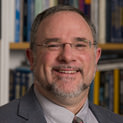2012 Gruber Cosmology Prize Press Release

Media Contact:
A. Sarah Hreha
The Gruber Foundation
+1 212-247-8484
media@gruberprizes.org
Online Newsroom: www.gruberprizes.org/news-media
FOR IMMEDIATE RELEASE
 | Charles Bennett and WMAP Team to Receive 2012 Gruber Cosmology Prize for Pinning Down the Universe |
June 20, 2012, New York, NY – Charles L. Bennett and the Wilkinson Microwave Anisotropy Probe (WMAP) team are the recipients of the 2012 Gruber Cosmology Prize. Their observations and analyses of ancient light have provided the unprecedentedly rigorous measurements of the age, content, geometry, and origin of the universe that now comprise the Standard Cosmological Model.
The Prize citation further recognizes that the exquisite specificity of these results has helped transform cosmology itself from “appealing scenario into precise science.”
Bennett and the WMAP team will receive the $500,000 award, and Bennett will receive a gold medal, at the International Astronomical Union meeting in Beijing on August 21.
Bennett, a professor of physics and astronomy at Johns Hopkins University, stresses the team nature of the collaboration. “There are so many heroes who stand up at just the right time and make something happen,” Bennett says, “and they all deserve credit for that.”
Modern cosmology was born in 1916 with Einstein’s relativity theory. In the 1920s Alexander Friedmann and Georges Lemaître each found that Einstein’s theory implies that the universe should be evolving. Incorporating data on the velocities of galaxies by the astronomer Vesto Slipher, Lemaître gave the form of a universal expansion with distance from Einstein’s theory of relativity and in 1929 Hubble presented data that galaxies are receding from us at rates directly proportional to their distances—the farther, the faster. The expanding universe gave rise to the Big Bang theory. (Contrary to common usage, the “Big Bang Theory” technically describes the expansion and cooling of the universe from a hot and dense early state, not to an initial explosive event.)
One of the theoretical consequences of the Big Bang interpretation is that when the universe was 378,000 years old, it would have cooled enough for the fog of electrons to be swept up into neutral hydrogen atoms so photons could decouple and go their separate ways. At that moment, the fog lifted so the photons we see today constitute a sort of snapshot of that moment the light broke free (as when we look at the bottom of a cloud) —a “baby picture” of the universe—though after all this time the expansion of space would have stretched the light from the image all the way into the microwave end of the electromagnetic spectrum. In 1948, Ralph Alpher, Robert Herman, and George Gamow calculated the Big Bang prediction of the abundances of the light elements and they predicted that the universe should be filled with a cosmic microwave background radiation. Then, in 1964, two Bell Laboratories astronomers discovered the cosmic microwave background—a nearly uniform glow suffusing all of space.
“Nearly” is the key. Because everything that is in the universe now would have to have been there when the universe was 378,000 years old, some extraordinarily subtle fluctuations in the microwave background would have to have been present—variations that would represent the seeds that would evolve into the galaxies, clusters of galaxies, and superclusters of galaxies that populate the universe as we know it.
A generation later, the Cosmic Background Explorer (COBE), a satellite telescope, began to fill in those details. In 1992, the COBE team announced the discovery of those relic wrinkles in space—an historic scientific achievement in itself, and a momentous step in cosmology’s long march from metaphysics to physics. Only follow-up observations of those wrinkles at far greater sensitivity and resolution, however, would allow scientists to pin down the fundamental cosmology of the universe.
Bennett, then at NASA and the deputy principal investigator of the COBE experiment that discovered the relic wrinkles, soon became the principal investigator of the Microwave Anisotropy Probe, later renamed the Wilkinson Microwave Anisotropy Probe after the death of pioneering cosmologist and MAP team member David Wilkinson of Princeton. (“Anisotropy” means “having a different value when measured in different directions”, referring here to the fluctuations in the microwave signal that represent the wrinkles in space.) The satellite launched in 2001, and the team released the analysis of the first year’s worth of data in February 2003.
“Every astronomer will remember the moment he heard the results from WMAP,” said John Bahcall of The Institute for Advanced Study in Princeton, NJ (now deceased).
Bennett and the WMAP team have released further data analyses in two-year increments. The latest, in 2011, showed that, within very tight margins of error, the universe:
- is within 1 percent of 13.75 billion years old;
- consists of 22.7 percent dark matter, 72.8 percent dark energy, and only 4.6 percent “ordinary” matter;
- seems to have undergone a period of “inflation” in the first trillionth of a trillionth of a trillionth of a second of its existence, just as many theorists have been predicting;
- has a flat geometry, to within 0.6 percent.
So precise are these findings that WMAP’s version of the universe is now commonly known as the Standard Cosmological Model.
One of the principal investigators on COBE, John Mather (who received the 2006 Gruber Prize in Cosmology and shared the Nobel Prize in Physics that same year), has commented on the selection of Bennett and the WMAP team for this year’s Gruber Prize. “Dr. Bennett’s discoveries,” Mather said, “have literally changed the scientific universe.”
Science magazine awarded WMAP its “Breakthrough of the Year” honor in 2003: “All the arguments of the last few decades about the basic properties of the universe—its age, its expansion rate, its composition, its density—have been settled in one fell swoop.”
Having far exceeded expectations for the quality and quantity of science it produced, the WMAP science team chose to stop taking data in August 2010. Although nobody expects that the release of the final data analysis in late 2012 will contain surprises, it will nonetheless mark the end of an era—an era that itself marked the dawn of the age of precision cosmology.
Additional Information
In addition to the cash award, Bennett will receive a gold medal and all recipients will receive a citation that reads:
The Gruber Foundation proudly presents the 2012 Cosmology Prize to Charles Bennett and the Wilkinson Microwave Anisotropy Probe team for their exquisite measurements of anisotropies in the relic radiation from the Big Bang---the Cosmic Microwave Background. These measurements have helped to secure rigorous constraints on the origin, content, age, and geometry of the Universe, transforming our current paradigm of structure formation from appealing scenario into precise science.
Members of the WMAP team are:
Chris Barnes, Rachel Bean, Olivier Doré, Joanna Dunkley, Benjamin M. Gold, Michael Greason, Mark Halpern, Robert Hill, Gary F. Hinshaw, Norman Jarosik, Alan Kogut, Eiichiro Komatsu, David Larson, Michele Limon, Stephan S. Meyer, Michael R. Nolta, Nils Odegard, Lyman Page, Hiranya V. Peiris, Kendrick Smith, David N. Spergel, Greg S. Tucker, Licia Verde, Janet L. Weiland, Edward Wollack, and Edward L. (Ned) Wright.
Laureates of the Gruber Cosmology Prize:
- 2011: Marc Davis, George Efstathiou, Carlos Frenk and Simon White for their pioneering use of numerical simulations to model and interpret the large-scale distribution of matter in the Universe
- 2010: Charles Steidel for his groundbreaking studies of the distant Universe
- 2009: Wendy Freedman, Robert Kennicutt and Jeremy Mould for the definitive measurement of the rate of expansion of the universe, Hubble's Constant
- 2008: J. Richard Bond for his pioneering contributions to our understanding of the development of structures in the universe
- 2007: Saul Perlmutter and Brian Schmidt and their teams: the Supernova Cosmology Project and the High-z Supernova Search Team, for independently discovering that the expansion of the universe is accelerating
- 2006: John Mather and the Cosmic Background Explorer (COBE) Team for studies confirming that our universe was born in a hot Big Bang
- 2005: James E. Gunn for leading the design of a silicon-based camera for the Hubble Space Telescope and developing the original concept for the Sloan Digital Sky Survey
- 2004: Alan Guth and Andrei Linde for their roles in developing and refining the theory of cosmic inflation
- 2003: Rashid Alievich Sunyaev for his pioneering work on the nature of the cosmic microwave background and its interaction with intervening matter
- 2002: Vera Rubin for discovering that much of the universe is unseen black matter, through her studies of the rotation of spiral galaxies
- 2001: Martin Rees for his extraordinary intuition in unraveling the complexities of the universe
- 2000: Allan R. Sandage and Phillip J. E. (Jim) Peebles: Sandage for pursuing the true values of the Hubble constant, the deceleration parameter and the age of the universe; Peebles for advancing our understanding of how energy and matter formed the rich patterns of galaxies observed today
The Prize recipients are chosen by the Cosmology Selection Advisory Board. Its members are:
Andrew Fabian, University of Cambridge; Wendy Freedman, The Observatories of the Carnegie Institution of Washington (Chair); Gerhard Huisken, Max Planck Institute for Graviational Physics; Helge Kraghe, Aarhus University; Andrei Linde, Stanford University; Julio F. Navarro, University of Victoria and Sadanori Okamura, University of Tokyo. Owen Gingerich of the Harvard-Smithsonian Center for Astrophysics and Martin Rees of the University of Cambridge also serve as special Cosmology advisors to the Foundation.
* * *
By agreement made in the spring of 2011 The Gruber Foundation has now been established at Yale University.
The Gruber International Prize Program honors individuals in the fields of Cosmology, Genetics and Neuroscience, whose groundbreaking work provides new models that inspire and enable fundamental shifts in knowledge and culture. The Selection Advisory Boards choose individuals whose contributions in their respective fields advance our knowledge and potentially have a profound impact on our lives. The Foundation will announce the 2012 Genetics Prize on June 28.
The Cosmology Prize honors a leading cosmologist, astronomer, astrophysicist or scientific philosopher for theoretical, analytical, conceptual or observational discoveries leading to fundamental advances in our understanding of the universe.
* * *
Affiliation with International Astronomical Union
In 2000, The Foundation and the International Astronomical Union (IAU) announced an agreement by which the IAU provides its expertise and contacts with professional astronomers worldwide for the nomination and selection of Cosmology Prize winners. Under the agreement, The Peter and Patricia Gruber Foundation also funds a fellowship program for young astronomers, with the aim of promoting the continued recruitment of new talent into the field.
The International Astronomical Union, founded in 1919, is an organization of professional astronomers. It serves today a membership of more than 9,000 individual astronomers from 85 countries, worldwide. Information about the activities of the IAU is available from www.iau.org.
* * *
For more information on the Gruber Prizes, visit www.gruberprizes.org , e-mail media@gruberprizes.org or contact A. Sarah Hreha at +1 (212) 247-8484. By mail: The Gruber Foundation, Yale University, Office of Development, PO Box 2038, New Haven, CT 06521.
Media materials and additional background information on the Gruber Prizes can be found at our online newsroom: www.gruberprizes.org/news-media


